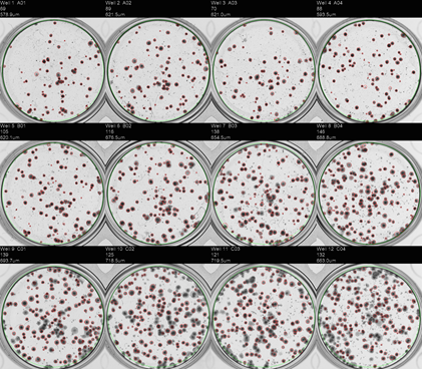In Vitro Assays
Nano to Micro/Macro (in vitro assays and cell analysis)
Cytotoxicity is one of the most important indicators for biological evaluation in vitro studies. Cytotoxicity and cell viability assays are based on various cell functions. A broad spectrum of cytotoxicity assays is currently used in the fields of toxicology and pharmacology. There are different classifications for these assays:
(i) dye exclusion assays (Trypan blue, eosin, Congo red, …). Determination of membrane integrity is possible via dye exclusion method
(ii) colorimetric assays (MTT assay, MTS assay, XTT assay, WST-1 assay, WST-8 assay, LDH assay, …)
(iii) fluorometric assays (alamar Blue assay): Fluorometric assays of cell viability and cytotoxicity are easy to perform with the use of a fluorescence microscope, fluorometer, fluorescence microplate reader or flow cytometer.
(iv) luminometric assays (ATP assay). Luminometric assays provide fast and simple determination of cell proliferation and cytotoxicity in mammalian cells. These assays can be performed in a convenient 96-well and 384-well microtiter plate format and detection by luminometric microplate reader. When cells damaged lethally and lose membrane integrity, they lose the ability to synthetize ATP and the ATP level of cells decreases dramatically .
(v) Colony Forming Efficiency (CFE) is a clonogenic assay that measures the ability of a single cell to form a colony: CFE is a labelled free assay and usually more sensitive than the conventional biochemical methods probably because this test does not measure a specific biological effect, but rather cell death in general.


